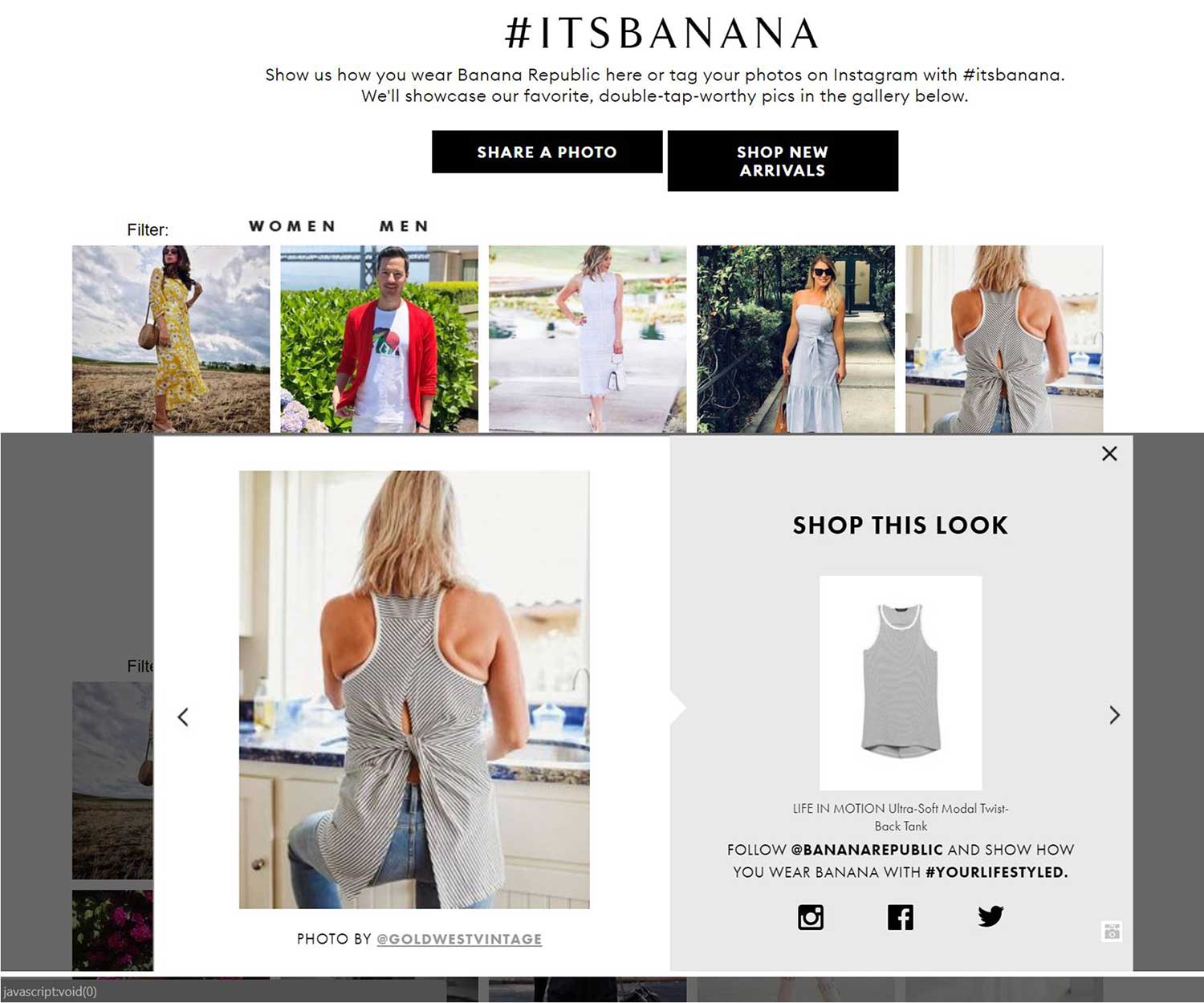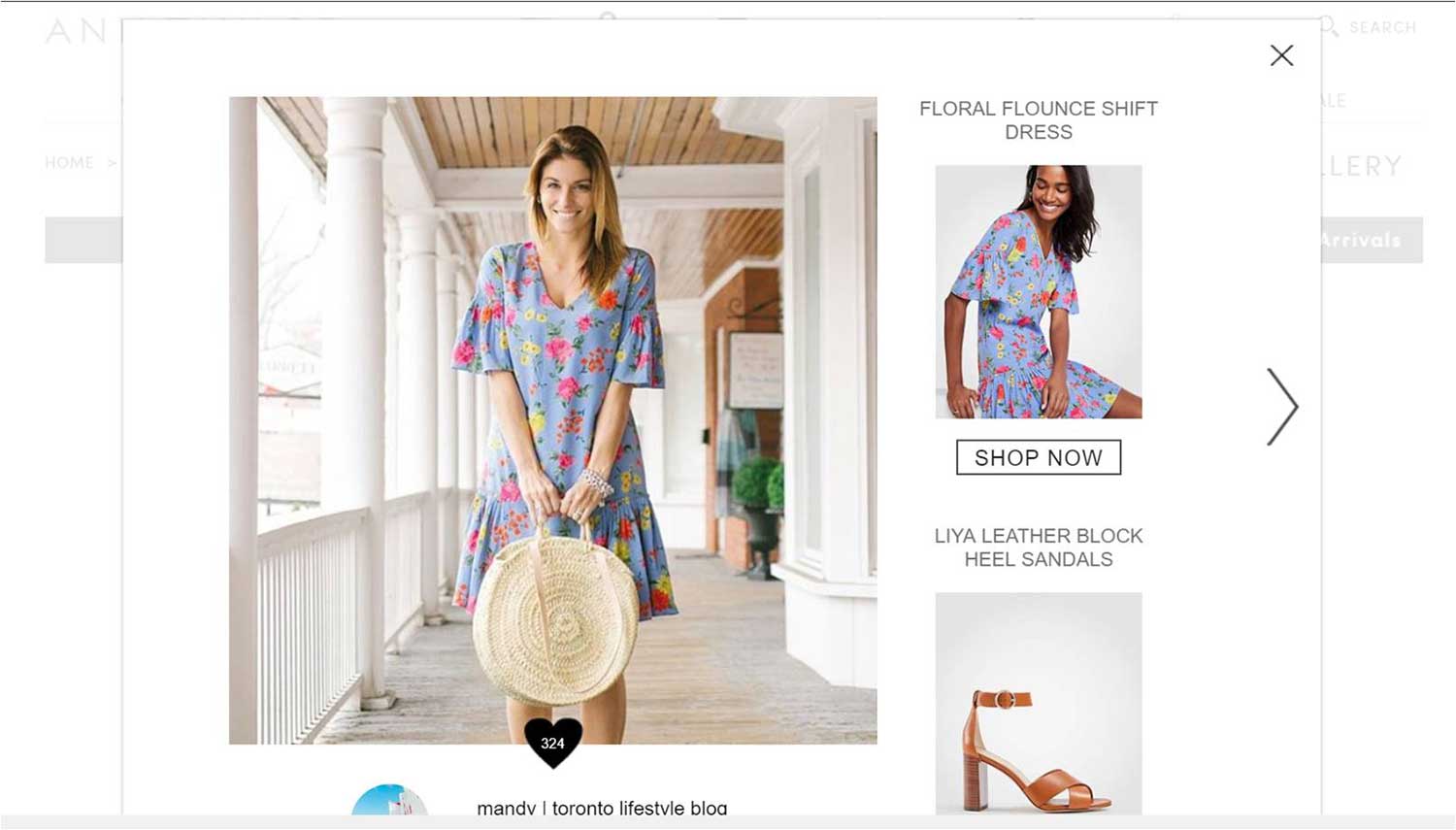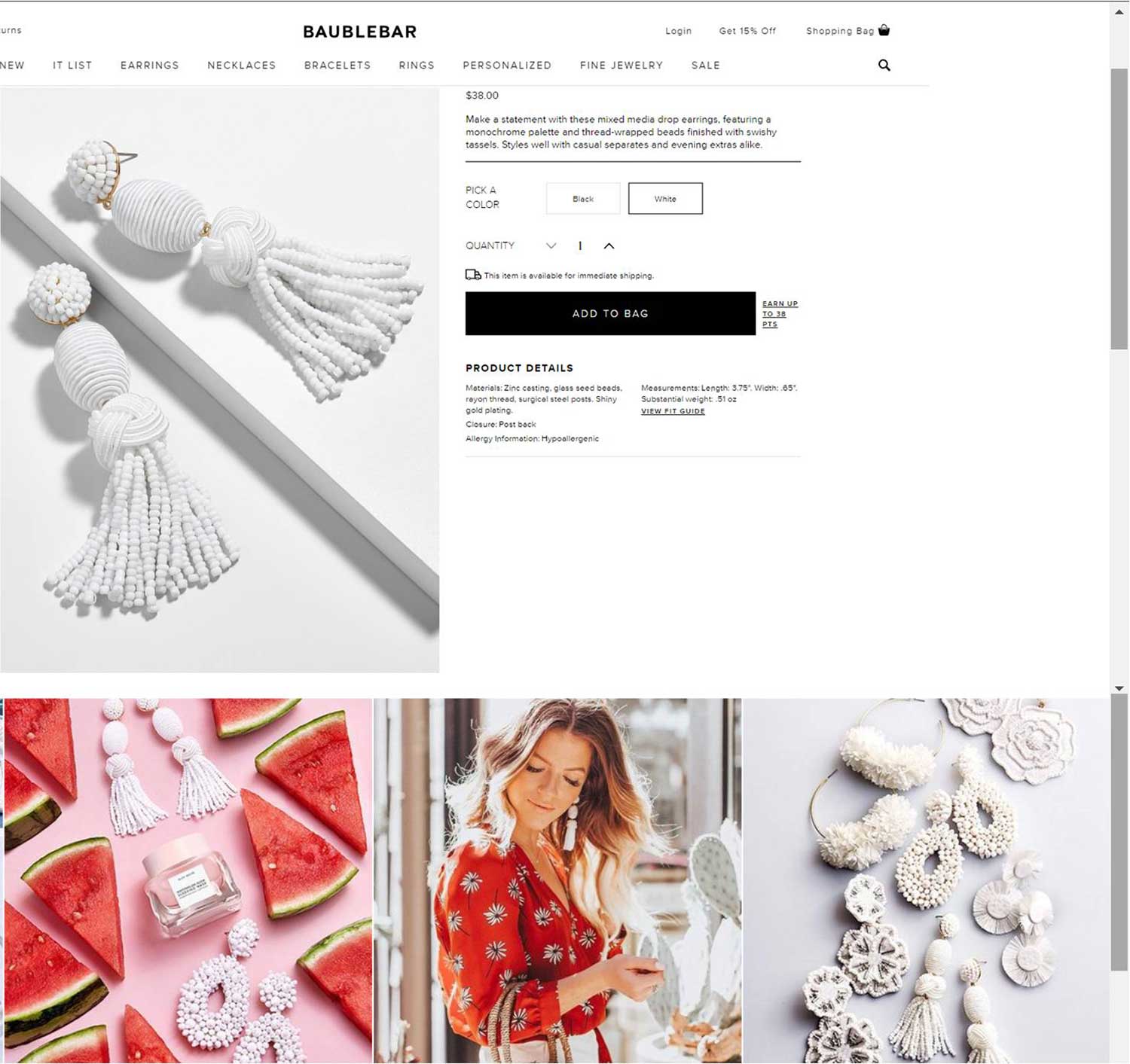Freelance Contracts
When people think about a day in the life of a social media influencer, they’re probably thinking about bikinis on beaches and street style selfies.
But behind the scenes, more often than not, we’re bogged down in paperwork – things like pitches, negotiations, accounting, invoicing, contracts etc.
Not exactly the dream lifestyle!
Lately, I’ve been getting more and more questions about what I do and how I do it, so I thought I would start a monthly column about the business of blogging: a look behind the scenes at the nitty gritty behind what it takes to succeed in today’s world of social media and influencer marketing.
ADVERTISEMENT
A Legal Guide for Bloggers
Today’s post will cover everything you need to know about freelance contracts.
- Why Blog Contracts are Vital
- What Influencer Contracts Should Include
- A Template for Sponsored Contracts
- How to Send Blog Agreements Electronically
Purchase a Blogger Collaboration Contract Template
Do you need a contract for sponsored posts?
Set your business up for success with a defined contract that outlines expectations for both parties. With this easy to fill in blog contract template, you'll have a clear, simple outline for deliverables, due dates, payment arrangements and copyright ownership.
If you'd like to snag the contract I use for all sponsored projects, you can get mine here.
ADVERTISEMENT
The Importance of Contracts in the Freelance Industry
There are lots of terms thrown around in the industry – “influencer” vs “content creator”, “brand collaboration”, “sponsored post”, “influencer campaigns” etc.
Whatever you want to call it, these boil down to business arrangements where businesses are increasingly looking to freelancers to create imagery, social media posts and digital content for marketing and advertising.
Any financial arrangement needs a contract.
Even if you’re just starting out, create a contract from the get go. It will establish your professionalism and protect you in the event of any issues.
Below, I’ll cover all the types of information a basic contract should include. You can use it as a guide to write your own contract.
Prefer to simply get a copy-and-paste contract? You can get the exact template I use here.
ADVERTISEMENT
Blog Contracts Define Expectations
There have been many, many times that I’ve had long back and forth discussions with a brand about a project where I think they’re asking for x and y and we settle on a project + rate…
only to discover that in the contract they’re expecting x, y and z.
Email, phone and even in-person discussions tend to talk high level details – the nature of the partnership, the expected goals, perhaps the number of images to create and social posts to share.. but rarely do they go into minute detail.
ADVERTISEMENT
No One Likes Discussing Money
For example, have you ever emailed back and forth with a brand where you outline the type of content you’ll create and they discuss the hashtags and timeline they’re looking for… but that tiny detail of payment never gets fully discussed?
They might state the generate project rate… but
- Do they need you to send them an invoice?
- What date are they paying you?
- If “net 30”, is it:
- Net 30 from the date the contract is signed
- Net 30 from the date they receive your invoice
- Net 30 from the date their accounting team processes your invoice
- Net 30 from the final draft approval date
- Net 30 from the final posting date
- Net 30 from when their client pays them – avoid this one like the plague!
- Do they need to set you up as a new vendor in order to get paid?
- How will you be paid
- Check, Direct Deposit, Bank Transfer, Paypal?
- If they prefer to use a payment method that involves fees, will they be covering the fees or are you expected to eat them?
ADVERTISEMENT
Tricky Things to Look Out For
Having a written, signed contract helps to outline the entire scope of expectations for both parties in the partnership.
In addition to payment, other important details that rarely get discussed upfront include usage rights for the content you’re creating.
Most brands hire influencers because they want to tap into their audience, but increasingly brands are utilizing influencer marketing not only to reach their demographics, but also to use the content created on the brand’s own marketing channels.
If a brand wants to use your content to sell product or for their paid advertising – that dramatically changes the scope of work and rates. Often, brands will now want rights to use your content in their email newsletters, Facebook and Instagram advertising, Pinterest ads, etc.
Make sure any contract outlines who will retain rights to the products and images produced.
ADVERTISEMENT
Freelance Blogger Contracts Benefit Both Parties
The ideal partnership is one where both parties feel like they got more value than what they put in. You can’t fulfill expectations if you don’t know the full extent of what each side wants.
Don’t Wait – It’s tempting to wait to have a contract until you’re “big enough” or “more established’ but the second that you accept a paid project, you deserve the legal protection of a contract. It’s a dirty secret in the industry that clients rarely pay on time. More below on how you can prevent this.
Legal Protection – Putting an agreement in written form provides protection so that, if for any reason, one party fails to deliver, the other can take recourse.
Professionalism – Social media marketing and the state of the “influencer economy” is still relatively new and a bit of a no man’s land. From talking with brands, PR reps and influencer marketing agencies – one of the biggest concerns when working with bloggers and Instagrammers is a lack of professionalism.
Being able to pull out a contract shows that you value your brand as a business, take partnerships seriously and intend to fulfill your commitments.
It also prevents brands from taking advantage of you – say if they want full image licensing rights and 3 months of exclusivity in exchange for a hideous wooden watch without cash compensation.
Keep reading to see an overview of clauses your contract should include.
ADVERTISEMENT
What Should Blog Contracts Include?
Now that you’re convinced you need a contract.. it’s time to start structuring one. Here are 10 must have clauses to include in any sponsored project collaboration.
These are the bare minimum to include in your agreement!
Blog Contracts for Sponsored Projects
1. Define the Parties & Timeline
Any blog agreement should start off by describing the two parties under agreement and specify the time period that the collaboration will cover.
ADVERTISEMENT
2. Scope of Work
What exactly will you be producing? Here, more specificity is key.
Is there key messaging?
For brands, it’s often important to them that their product is the ‘hero’ of the image and that competitor products are not featured.
They may specify certain attributes of the product that they want you to speak to. They may also want to mandate that your content stays live on your channels for a certain period of time.
Here is also a good place to list any required hashtags or brand tags that need to be included.
ADVERTISEMENT
3. Drafts and Re-shoots
Most clients do want a draft period, where they can review the content you’ve created and make any suggested changes.
Unfortunately, I’ve had several instances where the brand specified the project was a “rush job” and I had a couple days to turnaround the content.. but then they took 2 months to review.
The contract should also outline what happens if the client does not respond to the draft you submitted. Will it automatically be considered approved if changes are not received within a set time period?
Your contract should cover
- How heavy the client can change your content – can they re-write? provide factual corrections?
- How many revisions the client is allowed (1? 2? Unlimited?)
- What time frame do they have to respond to the draft?
- If there is a re-shoot, who will bear the cost?
ADVERTISEMENT
Re-shoot Fees
I once had a client approve all the product choices and content created, only to turn around and ask for a different set of items to be featured.
While it was a huge amount of work to re-shoot, the client provided a budget to cover the cost of the new items and for the additional photographer’s shoot fees.
Visual Lookbooks
Protect yourself by having a discussion upfront to gauge what look and feel the client wants, whether it be colors, mood, framing, etc.
Ask them for examples of past influencer content they’ve liked and examples of what they didn’t like. Experienced brands will often provide a mood board or lookbook for visual direction.
Can you select the products you want to feature? If so, make sure they approve your product choices before you create the work.
Re-shoots are both expensive and a time suck, so it’s best to discuss it before you produce anything. This is even more important for video work!
ADVERTISEMENT
4. Photography Rights & Usage
You might think a brand is hiring you because they want exposure to your audience, but often, they’re hiring you because they want to access your audience and to utilize your content.
Having a clause to specify rights and usage is vital. It should cover:
Who will own rights to content produced?
Typically photography rights remain with the creator but brands often want a license to use the content for their marketing. It’s pretty standard for the brand to want partial rights, so they can use the content on their social channels.
However, full licensing rights where the brand can use your content across their website, newsletter, printed materials, etc will cost a pretty penny. Getty images has a helpful calculator to give you a ballpark for what various high-quality images are sold for.
Consider defining the terms of the license (royalty free?), the duration and how they will use your likeness.
Check Rates: with Getty’s Calculator
Should you allow re-posts?
Many brands will ask to re-post your photo to their Instagram feed.
While you might think this gives you exposure, nowadays brands will make the Instagram post directly shoppable and so most people scrolling through their feed will check out the tagged products, not your page.
If your images will be used to help the brand generate sales, you should charge a higher fee for these rights.
However, if you have a small audience and know you likely won’t generate much in the way of reach or sales, offering high-res images for the brand’s use can be a strong selling point to get them to work with you.
ADVERTISEMENT
If you allow the brand to re-post, will they credit you?
For paid collaborations, brands will definitely want the rights to repost on their social media accounts. For trade collaborations, consider what type of credit will satisfy you for giving away your time and work for free.
Some brands use credit liberally – do some research on their Instagram and website to see how they typically credit third party work.
Are they tagging other creators in the photo and in the caption? Are they burying profile tags at the bottom of a 5 paragraph caption or are they crediting in the first line where it’s more likely to be seen?
ADVERTISEMENT

ADVERTISEMENT
Many brands have a section on their website where they showcase Instagram images they’ve been tagged in.
Some of these allow you to upload your images directly for a chance to be featured. Check out the gallery widgets to see if it’s worth your time.

ADVERTISEMENT
Many highlight the product in the images and relegate photo credit to the very, very bottom of the web page, in tiny font that’s unclickable.

ADVERTISEMENT
Other brands showcase user generated content directly on their website product pages, to help better sell the product.
Balance what you’re willing to accept and what you think your work is worth.
ADVERTISEMENT
Will the brand be able to create derivative content?
For example, can they use the images or content to create an e-book, corporate brochure or slideshare deck?
Internal usage is typically fine, but one well known fashion retailer printed giant posters of influencer produced content to hang in their store windows as advertising… without credit or compensation.
Will content created be available for the brand’s paid advertising?
Brands love Facebook advertising in particular.
Often they need beautiful lifestyle photos or videos to create a great ad. If they have the budget to pay for ads, they have the budget to pay for an image.
In 2020, I’ve seen even more brands utilize user generated content for Instagram story ads, Instagram post ads and Pinterest ads. The demand for quality content is growing and you should charge appropriately for your work.
ADVERTISEMENT
5. Exclusivity
Does the brand want a dedicated post (where no other competitors are featured) or are they okay with a more natural, non-dedicated post (perhaps they don’t have the budget to charge for exclusivity)
Sometimes the brand will go a step further and mandate that the influencer cannot work with any other competitor brands for a period before and after the project. It’s best to outline which specific brands and for how long.
Generally anything more than 1-2 weeks of exclusivity should be charged at a higher rate to reflect lost income during that period.
ADVERTISEMENT
6. Termination
Can either party terminate the agreement and if this happens, what is the project kill fee?
If the brand later has a change of heart and decides to nix the campaign after all your work has been created, you will want to ensure that you are still compensated for your time and efforts.
This clause is especially important for projects that involve upfront costs.
Horror Stories
In an extreme example, a Southeast Asian tourism board once organized a blogger press trip and asked the influencers selected to book their flights upfront, to be reimbursed after the project ended.
A couple weeks later, they sent out a mass email saying the trip had been indefinitely postponed, leaving those who had booked flights out a serious amount of money.
ADVERTISEMENT
Similarly, I was invited to a paid travel campaign, but asked to book my flights upfront, as the agency was getting paid by the client net 30.
The particular agency stated they would not be providing contracts and that our emails would be sufficient.. yet they had a history of canceling collaborations and were in the midst of 2 lawsuits.
Anytime a brand says a contract isn’t necessary it is a huge red flag.
You never know when a business will shift their marketing budget or the person you’re in contact with will abruptly leave the firm, so always get everything in writing and think twice before you pay for anything upfront.
Even more recently, a scam has been targeting photographers and Instagrammers by asking them to pay for round trip flights and photography permits. Never pay for project costs upfront!
ADVERTISEMENT
7. Payment Terms
For a freelancer, this is perhaps the most important clause.
As an independent contractor, you need to file quarterly taxes and manage your cash flow – which you simply can’t do if you don’t know when you’re getting paid.
I structure all my partnerships with 50% upfront to book a date on my editorial calendar and allow me to purchase any supplies, pay a photographer, etc.
I also make sure the final payment is before posting – I’ve unfortunately been burned too many times by brands who, after receiving everything they need, ghost when it comes time to payment.
ADVERTISEMENT
Invoicing & Vendor Set Up
Most brands require an invoice for their accounting departments to process payment – great partners will tell you upfront, but I learned this the hard way after expecting payment after 30 days and getting nothing.
Make sure you ask!
When I just started out, I made the mistake of “expecting” payment by day 30. Unfortunately, by day 31 when payment didn’t come, I found out I needed to send the brand an invoice before they would pay.
After I sent it, their accounting department bumped payment to their “next cycle” for another 30 days out – in that case I worked to produce content upfront but was actually being paid on a net 60 cycle!
ADVERTISEMENT
Define Net 30
I don’t personally agree with the Net 30 cycle but it’s unfortunately common in the industry. If you are okay with being paid 30 days after delivering your work, it’s important to define when the 30 day count down begins.
Charging Interest
A helpful clause to add is an interest schedule for late payments.
As freelancers, you should also outline what happens if the brand fails to make payment in a timely fashion. You can start with an interest charge of 10% on the outstanding balance compounded monthly for your blog contract.
If a brand pushes back on paying interest for late payments, it’s a red flag that they will probably be late in paying and you should decide if you want to work with no expectation of getting paid.
ADVERTISEMENT
8. Jurisdiction
Contracts should state the business name for both parties as well as their addresses.
They should also include a clause outlining which state jurisdiction the agreement will be bound by, should you need to go to court. If you do have to hire an attorney and sue for breach of contract, will the brand be responsible for your legal expenses?
ADVERTISEMENT
9. Signatories
Both parties need to sign and date (duh) but in this section, it’s important to outline the key contacts at the brand that you will be communicating with.
If working through a PR firm or agency, do your best to get both a brand contact as well as the third-party contact and make sure to spell out which party will process payment.
I once had a situation where a PR firm made the first payment, then ghosted on the remaining payments because they tried to claim the brand was responsible for payment. The runaround went on for months because of this, despite the fact that the PR firm signed the contract and made the first payment.
I think I finally got paid after… 120 days? and only because I reached out to the brand directly as a last ditch measure.
I also had another situation where the brand signed the document, but the payment came from the PR firm. When it came time to process subsequent payments, the PR firm (despite cutting the checks) claimed it was up to the brand to pay and they were “on vacation”. I did eventually get paid, but the runaround was not fun.
ADVERTISEMENT
10. Confidentiality
Finally, a standard clause to include in blog contracts is confidentiality, ensuring that any discussion surrounding the agreement be kept to just the two parties.
Hire a Professional
I am not a licensed legal professional and you should consult with a lawyer in your business jurisdiction for the latest, up to date legal counsel.
Try to find a lawyer who is familiar with influencer marketing (maybe they’ve worked for an influencer marketing agency to draft blogger projects or they have experience as in-house counsel for a corporate brand tasked with hiring and contracting influencers).
They’ll know what specific clauses to look out for! Also make sure their license is for the state jurisdiction that your contract is written for.
ADVERTISEMENT
Influencer Contract Template
I’m sure that with these tips, you’re well informed about what a influencer agreement should look like.
But to help you even more I’ve put together an easy to fill out sample contract for you that you can use whenever you work with brands!
It includes all of the 10 clauses I’ve outlined above so all you have to do is fill in the blanks where it applies for the scope of work, and you’ll be well prepared. Please note: it’s highly recommended to get it reviewed by a legal professional as I am not a licensed attorney.
Why You Should Send Contracts Electronically
The easiest way to handle contracts is to use an electronic service that takes care of sending and signing electronically.
If you’re just starting out, you can draft a word document, pdf it and send that. Once you’ve gotten a couple brand partnerships under your belt, consider using an electronic contract service.
ADVERTISEMENT
Extra Time Delay
Contracts via pdf attachments create a bit of a lag by requiring a brand to print, scan and re-send and then you need to print, scan and re-send.
Electronic contracts are handy because they can be opened and signed in one easy action.
They can even be opened from a mobile phone and signed with a finger or a stamped signature so they’re very easy to execute even on the go.
After both parties sign, the final executed version is electronically mailed to both parties. A rookie mistake I made in the beginning was signing a contract first and then neglecting to ask for the completed contract that also had the brand signature.
ADVERTISEMENT
Difficult to Update
You’ll likely have a base template and modify the scope of work for each specific project. Perhaps one is a video creation project, another is a series of social posts.
With a physical contract, you’ll need to constantly re-pdf and re-send the attachment and I never want to accidentally send an old version or incorrect document!
With most electronic services, you can easily update each template and access the most modern version of the contract.
If for any reason, project deadlines get pushed back, you can easily amend via electronic services. Just write out the proposed changes, send the amendment for sign off and attach it to the original.
ADVERTISEMENT
Clunky Experience
Finally, this last reason is more of a qualitative one but paper documents in this day and age are a bit clunky.
I firmly believe that your brand is established throughout the entire project “experience”, much in the same way that Apple takes care to design not only its products but also its product packaging, user manuals, retail stores and shopping bags.
Having a seamless on-boarding experience from the beginning is a mark of differentiation and establishes your credibility and professionalism from the onset of the project.
There are both free and inexpensive services which I’ve outlined below. Also remember that legal and electronic services are tax-writable business expenses.
ADVERTISEMENT
Electronic Contracts & Digital Bookeeping
Quickbooks – I recommend Quickbooks to create and send invoices on the go. After each contract is signed, Quickbooks will create receivables and payables so that you can track each project's revenues and expenses.
When I first started out, I kept track of everything manually in excel but over time it got overwhelming.. especially at tax season. Quickbooks is much easier since it automates everything and their basic plan is pretty affordable (they also offer a free trial).
In the US, businesses need to file quarterly taxes and I found it really difficult to estimate my potential earnings when I was starting out. Quickbooks does your tax filing for you! It can also maximize your Schedule C deductions, separate business and personal expenses and track mileage automatically.
Grab a free trial of Quickbooks here.
Other Electric Contract Services:
DocuSign – One of the nice features about their service is that it “guides” the signee along to each specific area they need to initial or sign. Then, it will automatically email a completed copy to each party upon completion, so you don’t have to follow up and ask for it!
Hello Sign – This has a beautiful electronic interface that makes contract sending, signing and record keeping easy. The first 3 contracts a month are free, which is excellent if you’re just starting out.
Adobe Sign – I don’t like this system because you can’t just ping it back and forth for signatures.
Fresh Books – this one is nice because you maintain invoicing and contracts in one platform. you can build everything into this platform to auto sync invoicing and accounting in one easy system. It’s about $25/month but you can try a 30-day free trial.
Honey Book – another great platform for contracts since with their service, the brand can pay right after signing the contract. Because of this integration, Honey Book is more expensive, currently about $40/month.
ADVERTISEMENT
Blog Contracts Are Key to Running a Successful Business
Finally, as a blogger or social media influencer, you’re essentially your own boss and running your own small business. It’s tough to juggle being a stylist, photographer, editor, copywriter, accountant, operations manager and junior attorney in the beginning.
I hope this article helped you to draft your own collaboration agreement – or you can always grab my template right here.
Remember, having a contract is vital!
ADVERTISEMENT
Feel free to comment below if you have questions or suggestions for what to cover in my next blogging series.
Follow me @Sher She Goes on




Great article with lots of good info.
I do use Adobe Sign and my clients find it extremely simple and easy to use.
This is the BEST! Thank you for sharing your knowledge for newbies like me who are just getting our feet wet! :)
Thanks for the valuable information! I am new to working with brands and am completely lost on what the contract should include. Would you mind sharing a sample of a contract?
Author
Best to get a lawyer to help you draft one that will hold up in court. Ive listed in the post key clauses to have though!
I want to say thank you so much for this post. It was very informative and helps to easy the confusion I had about where to start with a contract!
Author
So glad it was helpful for your Krys!
You are the bomb! This was super helpful!
Thank You!
This was a really informative article with lots of food info. Thank you for sharing.
This is so helpful! Thank you very much for writing this post!